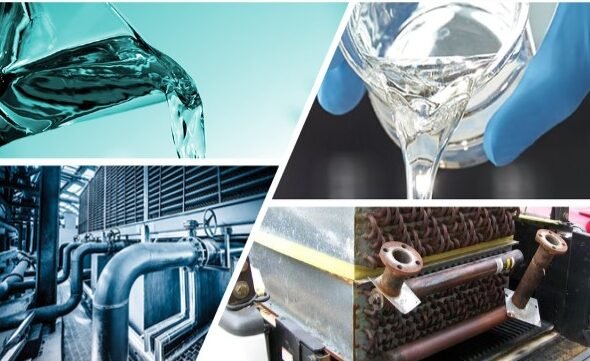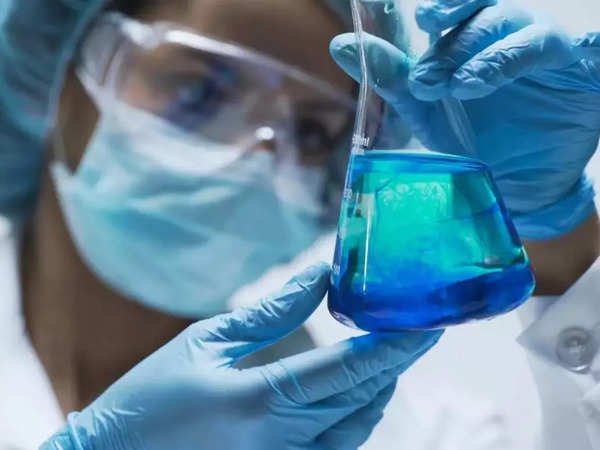GLYCOL – HEAT TRANSFER FLUID
Glycols – either ethylene glycol or propylene glycol are very popular heat transfer fluid for cooling and heating applications.
Glycols – either ethylene glycol or propylene glycol are very popular heat transfer fluid for cooling and heating applications.
Glycols – either ethylene glycol or propylene glycol are very popular heat transfer fluid for cooling and heating applications. However, when used by themselves and without inhibitor they tend to cause to damage to the metals in the equipment. Glycol is a water-miscible coolant that is frequently used in heat transfer and cooling applications. It provides better heat transfer parameters than water and can be mixed with water to provide a variety of heat transfer characteristics. Glycol comes in two varieties: ethylene glycol and propylene glycol.
The low freezing points of glycol mixtures make them ideal for cooling items below the freezing point of water. Thus, glycol/water mixtures are often used to cool freezers and similar environments. The low temperaturs associated with glycol mixtures make them useful for applications where a chiller must carry a large amount of heat must away quickly. Heat is a by-product of many chemical reactions; glycol’s ability to carry heat away quickly makes it useful for maintaining the temperatures of chemical reactions

Water is probably the most efficient heat-transfer fluid known. If it did not freeze, water would be the ideal heat-transfer fluid for cooling applications. When freeze conditions exist (<35 F), ethylene glycol and propylene glycol can be added to water to provide freeze protection and burst protection.
Both glycols have lower heat-transfer efficiencies than water and are denser, resulting in higher volumetric flowrates or heat-exchange areas required to maintain the same temperature levels.
Burst protection requires less glycol and allows some freezing to turn the coolant into a slush that is not easily pumped but will not cause the pipe to burst. This method is used in closed circuits that are not operated in cold weather. The glycol content needed for this protection is lower than Freeze protection
Water volume expands by 9% when frozen. Glycols depress water’s freezing point providing protection to temperatures as low as -70 F to -100 F. Freeze protection prevents ice crystal formation at the lowest temperature expected in the coolant circuit, thus actually making this glycol-water combination work as refringent media. This type of protection is necessary for year-round pumping.


When wrong quality of water is used to dilute the glycols, it causes more solubility in water resulting into scaling of the system and thus impacting the equipment performance. Ideally, deionized water should be used for dilution. Water hardness is generally made of soluble mineral salts including sodium, calcium and magnesium cations, attached to chlorides, carbonates and sulphate anions. The hardness originating out calcium and magnesium cations would reduce heat transfer through scaling on the equipment surface. In the long run it would also result in the formation of sediment and cause circulation problems. Besides all this, high concentrations of corrosive ions, such as chloride and sulphate, will corrode the metal surface.
Glycol degradation occurs when the glycol is exposed to high temperatures, particularly in the presence of oxygen or oxidizing agents. This degradation results in the formation of organic acids, specifically, glycolic, formic and acetic acids. As degradation progresses and the pH of the fluid decreases, the system eventually becomes acidic and accelerates the corrosion of many metals.